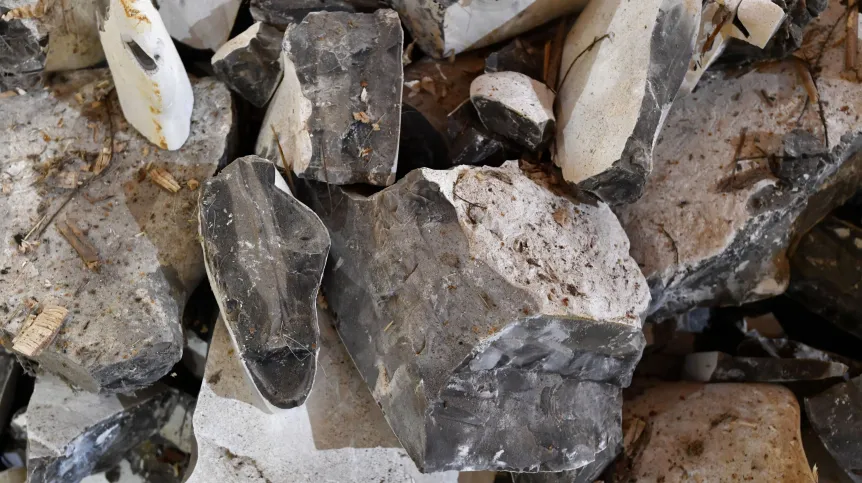
In Krzemionki (Świętokrzyskie), one of the most important archaeological sites in Poland, research will begin on rock paintings made by Neolithic miners. Researchers aim to uncover invisible details of the paintings, determine their original appearance, and better understand the intentions of their creators.
The project will be carried out jointly by the Historical and Archaeological Museum in Ostrowiec Świętokrzyski and the Institute of Archaeology and Ethnology of the Polish Academy of Sciences.
'Around 60 rock traces have been preserved in Krzemionki, a dozen of which can be interpreted as simple paintings', says Artur Jedynak, an archaeologist, curator and UNESCO coordinator at the Historical and Archaeological Museum.
The pictograms were made mainly with charcoal from torches used to illuminate the mine tunnels. Some of the preserved symbols could have had a practical, warning or symbolic meaning. Some of them, such as the preserved image of the Great Mother, may be evidence of the spirituality of ancient miners.
The research project 'More Light!' will focus on the technical analysis of these paintings using infrared reflectography, which can reveal details invisible to the naked eye.
'We want to check whether there are layers in places with drawings that are invisible to the human eye or made with materials other than charcoal', the curator says.
Another goal of the project is secure the drawings. The research results will be the basis for developing a conservation program. The researchers also hope that the potential discovery of invisible details of the paintings and their original appearance will allow to better understand of the creators' intentions.
The group of the most spectacular paintings, discovered in Krzemionki in the late 1920s by archaeologist Stefan Krukowski, unfortunately did not survive to this day. In one of the underground chambers there were several paintings depicting a bull's head, feet, and a boat. 'Unfortunately, this part of the mine no longer exists', Jedynak says. Reproductions of photographs of these paintings can be found in the Krzemionki monograph from 1939.
After World War II, Professor Zygmunt Krzak discovered another pictogram that has survived to the present day and is used as the logo of the Historical and Archaeological Museum in Ostrowiec Świętokrzyski. It is the Great Mother or Foremother - an image of a probably human figure, interpreted by some researchers as a supposed Neolithic deity.
Research work in the 'More Light!' project will begin in the second half of January. As a result, part of the tourist route may be temporarily closed.
The research will also include analysis of traces of light sources, such as greasy soot on the ceilings, which may confirm the hypothesis that animal fat lamps were used in the mines. 'We want to examine the chemical composition of the soot to determine what type of light miners used', Jedynak adds.
He points out that one of the researchers, Tadeusz Żurowski, wrote about limestone vessels with a wick, which could have served as lamps. The new analyses may be the key to better understand the technologies used by Neolithic miners. Analyses of the collected materials will be conducted in laboratories in Poland, including Kraków.
Krzemionki, inscribed on the UNESCO World Heritage List in 2019, is the world's largest complex of prehistoric striped flint mines. The mines were established in the Neolithic and early Bronze Age, about 5 thousand years ago. The mining field, covering an area of 80 hectares, contains approx. 4 thousand shafts. Flint was mainly used to make polished axes, which were distributed within a radius of 660 kilometres. The discovery of the Neolithic mining field was made in 1922 by geologist Jan Samsonowicz. (PAP)
Science in Poland
wdz/ bar/













